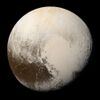Astronomy:(120348) 2004 TY364
From HandWiki
| Discovery | |
|---|---|
| Discovered by | M. E. Brown C. Trujillo D. L. Rabinowitz |
| Discovery site | Palomar Obs. |
| Discovery date | 3 October 2004 |
| Designations | |
| (120348) 2004 TY364 | |
| Minor planet category | TNO[1] · cubewano[2] SCATEXTD[3] Other[4] |
| Orbital characteristics[1] | |
| Epoch 13 January 2016 (JD 2457400.5) | |
| Uncertainty parameter 3 | |
| Observation arc | 11834 days (32.40 yr) |
| Earliest precovery date | 16 July 1983 |
| |{{{apsis}}}|helion}} | 41.384 astronomical unit|AU (6.1910 Tm) |
| |{{{apsis}}}|helion}} | 36.176 AU (5.4119 Tm) |
| 38.780 AU (5.8014 Tm) | |
| Eccentricity | 0.067140 |
| Orbital period | 241.50 yr (88208.5 d) |
| Mean anomaly | 265.93° |
| Mean motion | 0° 0m 14.692s / day |
| Inclination | 24.8499° |
| Longitude of ascending node | 140.6141° |
| |{{{apsis}}}|helion}} | ≈ 12 May 2079[5] ±6 days |
| 359.71° | |
| Earth MOID | 35.1896 AU (5.26429 Tm) |
| Jupiter MOID | 30.8216 AU (4.61085 Tm) |
| Physical characteristics | |
| Dimensions | 512+37 −40 km[6] |
| Rotation period | 11.70 h (0.488 d)[1] |
| Geometric albedo | 0.107+0.020 −0.015[6] |
| Apparent magnitude | 20.4[7] |
| Absolute magnitude (H) | 4.520±0.070,[6] 4.8[1] |
(120348) 2004 TY364, provisionally known as 2004 TY364, is a trans-Neptunian object. It is an inner classical Kuiper belt object in the definition by Gladman, Marsden, and Van Laerhoven (e<0.24).[2] Its inclination of almost 25 degrees disqualifies it as such in Marc Buie's definition .[3] It is also not listed as a scattered disc object by the Minor Planet Center.[8] It was discovered by Michael E. Brown, Chad Trujillo and David L. Rabinowitz on October 3, 2004 at the Palomar Observatory.
Light-curve analysis suggests it is not a dwarf planet.[9]
(As of 2014), it is 39.2 AU from the Sun.[7]
References
- ↑ 1.0 1.1 1.2 1.3 "JPL Small-Body Database Browser: 120348 (2004 TY364)". https://ssd.jpl.nasa.gov/sbdb.cgi?sstr=120348.
- ↑ 2.0 2.1 Nomenclature in the outer Solar System
- ↑ 3.0 3.1 Marc W. Buie. "Orbit Fit and Astrometric record for 120348". SwRI (Space Science Department). http://www.boulder.swri.edu/~buie/kbo/astrom/120348.html.
- ↑ "MPEC 2010-S44 :Distant Minor Planets (2010 OCT. 11.0 TT)". IAU Minor Planet Center. 2010-09-25. https://minorplanetcenter.net/mpec/K10/K10S44.html.
- ↑ JPL Horizons Observer Location: @sun (Perihelion occurs when deldot changes from negative to positive. Uncertainty in time of perihelion is 3-sigma.)
- ↑ 6.0 6.1 6.2 Lellouch, E.; Santos-Sanz, P.; Lacerda, P.; Mommert, M.; Duffard, R.; Ortiz, J. L.; Müller, T. G.; Fornasier, S. et al. (September 2013). ""TNOs are Cool": A survey of the trans-Neptunian region. IX. Thermal properties of Kuiper belt objects and Centaurs from combined Herschel and Spitzer observations". Astronomy & Astrophysics 557: A60. doi:10.1051/0004-6361/201322047. Bibcode: 2013A&A...557A..60L. http://www.aanda.org/articles/aa/pdf/2013/09/aa22047-13.pdf. Retrieved 7 November 2014.
- ↑ 7.0 7.1 "AstDys (120348) 2004TY364 Ephemerides". Department of Mathematics, University of Pisa, Italy. https://newton.spacedys.com/astdys/index.php?pc=1.1.3.0&n=120348.
- ↑ "List Of Centaurs and Scattered-Disk Objects". Minor Planet Center. https://www.minorplanetcenter.net/iau/lists/Centaurs.html.
- ↑ Gonzalo Tancredi; Sofía Favre (13 October 2008). "Dwarf Planet & Plutoid Headquarters". Portal Uruguayo de Astronomía. http://www.astronomia.edu.uy/dwarfplanet/list.html. (Which are the dwarfs in the Solar System?)
External links
 |



